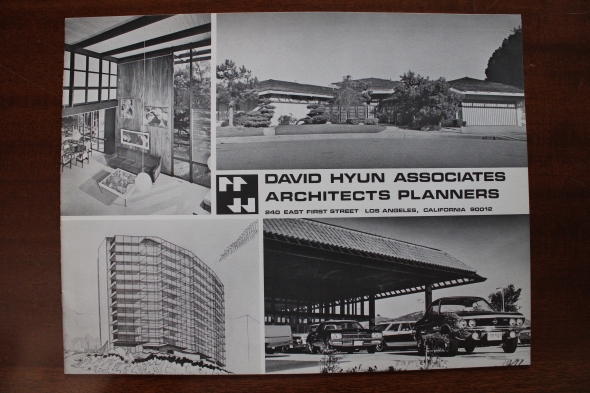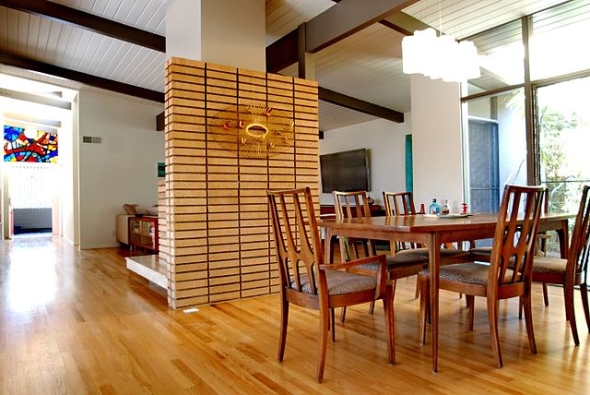

Professor Sujin Eom contributed to a new report from the Cooper Hewitt Smithsonian Design Museum on Asian American architects and designers—and works across platforms to expand American architectural history.
This spring, the Cooper Hewitt Smithsonian Design Museum released a new report on the work of Asian American architects and designers—becoming among the first robust pieces of research on the topic.
The report, Rediscovering Asian American and Pacific Islander Architects and Designers, features five original essays by experts of Asian American art, architecture, and design. Sujin Eom, an assistant professor in the Department of Asian Societies, Cultures, and Languages, co-wrote an essay on Korean American architects and designers with Sean McPherson of Bridgewater State University.
Eom says that her frustration in trying to develop a new course on Asian American art and architecture in 2020 inspired her to contribute to the project.
"I encountered significant challenges in crafting the course syllabus and locating relevant teaching materials," Eom says. "This challenge was primarily due to the paucity of scholarly works and public archives focusing on architects of Asian ancestry. I hadn't even taken or seen any class offered on that subject matter myself when I was an architecture student. I almost gave up on this new course."
Fortuitously, the Smithsonian approached a scholarly working group in 2021 that included Eom about an archiving project centered on Asian American and Pacific Islander architects and designers. The project was inspired in part by the rise in anti-AAPI sentiment and violence during the pandemic, with the aim of showcasing the work of Asian American architects and designers who helped shape the modern U.S. landscape and increase the inclusiveness of the museum's collection.
Eom jumped at the opportunity to begin creating long-overdue archives of AAPI architectural history. She chose to focus on Korean Americans since these architects and their works, she says, are often "marginalized even among the marginalized."
Eom crafted her essay with the goal of inspiring readers to "rethink what constitutes 'American' architectural history, especially with regards to the significant yet understudied role of architects of Korean descent—who have often been deemed not 'American' enough—in shaping the everyday American landscape."
The essay begins with Eom redefining the term "Asian American" from one that is often used today to "tokenize individuals of Asian ancestry (and) reinforce stereotypical assumptions about what Asian American architecture would entail" to one that's more "relational" to the historical circumstances under which these architects emerged. To that end, she breaks down her selection and analysis of Korean American architects into three categories, each of which "corresponds with the key historical conditions that have shaped the Korean diaspora across the Pacific, from Japanese colonialism and the Korean War to Cold War exchange programs and immigration reform."
Eom's essay also offers suggestions for future research on Korean American architects: "material that has the greatest potential to increase public awareness of the rich history of Korean American architects, and to bring new ideas to research and teaching of American cultural history."
As an example, Eom points to the late David Hyun, the first Korean American architect in California and the founder of his own architectural firm, David Hyun and Associates. "Hyun came to design numerous modernist residences in southern California throughout the 1950s and 1960s, thereby contributing to the flourishing of mid-century modern architecture on the West Coast," Eom says.

One of Hyun's most famous works is the McTernan House, originally built in 1960 in Los Feliz for prominent civil rights attorney John T. McTernan. The two-story house exemplifies characteristics of midcentury modern residential architecture, including elements such as floor-to-ceiling sliding glass doors and windows that are meant to integrate exterior gardens into interior spaces.

Eom stresses that future archival efforts should prioritize materials such as the McTernan House, not only because it demonstrates the significance of Hyun's work in shaping modern architecture but also because it "serves as a poignant testament to the Cold War history of Asian Americans, whose lives were deeply affected by the fervor of anti-communism. During the heightened tensions of McCarthyism in the 1950s, Hyun faced multiple deportation hearings due to his involvement in the Communist Party," Eom says, noting that Hyun came to build the McTernan House because the attorney defending him during these hearings had a longstanding legal partnership with McTernan.
"It is even more crucial to collect and acquire such materials at this moment," Eom adds, because unlike American museums and archives, Korean institutions are increasingly interested in collecting and archiving works of Korean American architects. That means that despite Korean Americans' significant contributions to American architecture, their work could be far better represented in Korean museums than in permanent collections in the United States.
"This physical relocation to Korea could pose significant challenges for U.S. scholars, curators, and students in accessing these materials, thereby perpetuating another cycle of neglect in U.S. architectural history," Eom says.
While the new Smithsonian report represents a significant step in establishing these crucial archives in the U.S., it's just the beginning, she says.
As co-chair of the Society of Architectural Historians' American and Diasporic Architectural History Affiliate Group, she helped launch an interdisciplinary working group on AAPI archives this year."
"These initiatives highlight the imperative to build sustainable platforms to recognize and preserve the work of AAPI architects and designers, as well as the urgency of expanding American architectural history," Eom says.